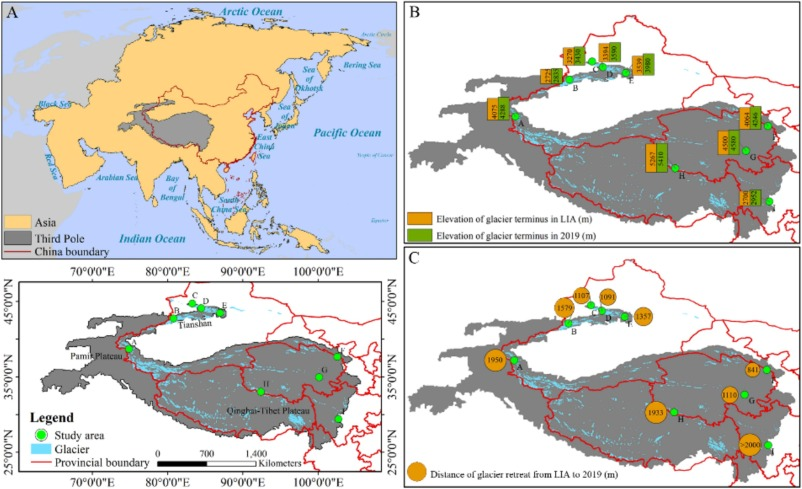Glacier forelands provide ideal natural laboratories for studying primary vegetation succession. However, understanding of vegetation dynamics on glacier forelands in the Third Pole (TP) region remains limited. In this study, we employed field sampling and aerial photography to investigate key vegetation parameters (species composition, species diversity, and fractional vegetation cover (FVC)) along chronosequences on nine representative glacier forelands of the TP, spanning continental, subcontinental, and maritime glacier types, then analyzed vegetation changes along successional gradients and assessed floristic similarity both within and among the glacier forelands. Our results showed that species diversity and FVC generally exhibited increasing trends, with fluctuations from young to old forelands. These parameters increased more rapidly on maritime glacier forelands. Plant life-forms were similar during the early stages across all forelands but began to diverge as succession progressed, particularly between different glacier types. Furthermore, floristic similarity was observed between glacier forelands, with the highest similarity occurring between forelands of the same glacier type in adjacent geographic locations. Our findings highlight the critical roles of local climate and geographic factors in shaping proglacial ecosystems and flora, providing a scientific basis for understanding the effects of climate change on proglacial ecosystems and guiding biodiversity conservation efforts.
